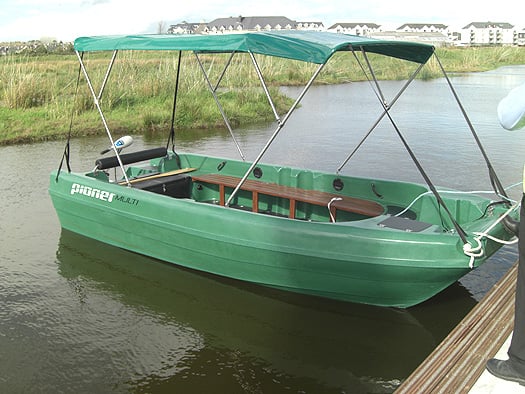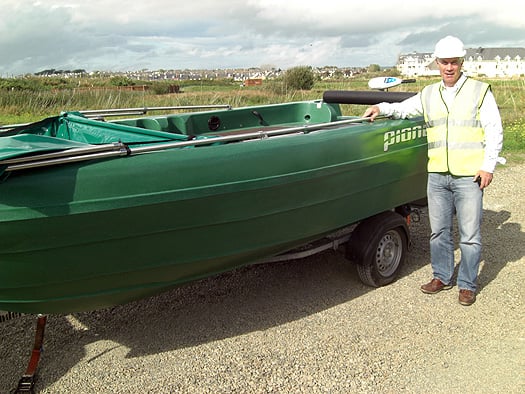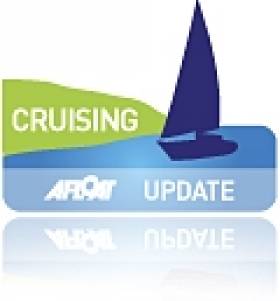Displaying items by tag: safari
Safari Boats Order Boosts Kerry Boat Building Firm
Kerry Boat-builder O'Sullivan's Marine (OSM) is bucking the trend in the depressed marine industry. The Tralee firm have a busy order book and report strong demand for its traditional lake boat marque but it also has interest in more exotic boats too for the emerging nature tourism market.

Tried and tested, the new Safari boats are ready for Lee Valley
The first of the orders processed in Tralee is the supply of four Pioner Multi boats with Motor Guide 24v Electric Outboards for the local Lee Valley Development, a new eight hectare (20 acre) eco-tourism development comprising a Nature Park. The four boats will be used for safari-style boat rides.
'We carried out water trials yesterday, all is in order and the fully fitted out boats are being delivered this week', says managing director Brian O'Sullivan.

OSM's Brian O'Sullivan with one of the new Pioner boats
OSM, a member of the Irish Marine Federation, is also supplying two lake boats to Creeslough Angling Association in Donegal. Six Irish built boats have also been ordered by Dunfanaghy Angling Association in Donegal. Five more lake boats are also going to Waterville, Co. Kerry. All orders are for November delivery! Recession? What recession?
OSM have a selection of used craft on the boats for sale website. See them here
Forty Boats Prepare for Liffey Cruise
The boats are mostly modest sailing yachts with some motor cruisers, typically eight to twelve metres long with up to six people aboard. They come from ports on the East coast of Ireland between Arklow and Skerries.
The sailors will spend the afternoon visiting other boats, renewing friendships and comparing notes. Some will use the opportunity to explore the city centre from this unusual perspective.
There are organised visits to the Jeanie Johnston and the Guinness Storehouse. A special attraction this year is a guided tour of the docks in an inflatable boat, by Sea Safari.
In the evening the whole group, about a hundred people, will gather for dinner in a nearby hotel. Formalities will be limited to a review of the season in general and the summer cruise in Strangford Lough, but the party is likely to continue until late.
Most sailors will spend the night aboard their boats. On Sunday morning commodore Derek Harris will say mass aboard the Jeanie Johnston. The bridges will open once more at noon, and the fleet will disperse to their home ports.
This annual event is organised by the Cruising Association of Ireland with the co-operation of the Dublin Docklands Development Authority and Dublin Corporation.
The Cruising Association of Ireland supports and represents the cruising community in Ireland, both power and sail (www.cruising.ie). Contact Derek Harris 087 6740334 [email protected], or Simon Parker 0872497859 [email protected]































































